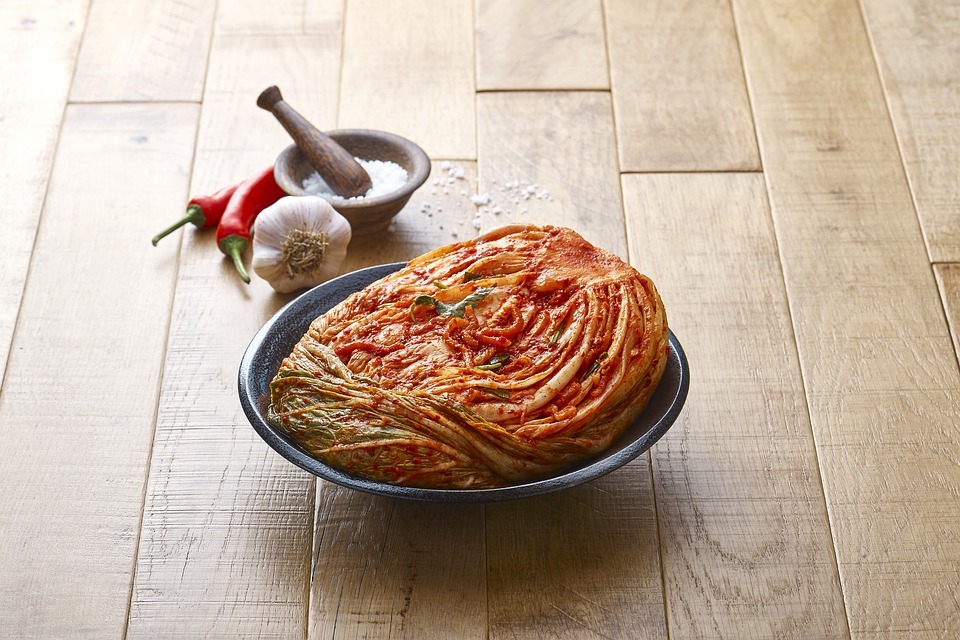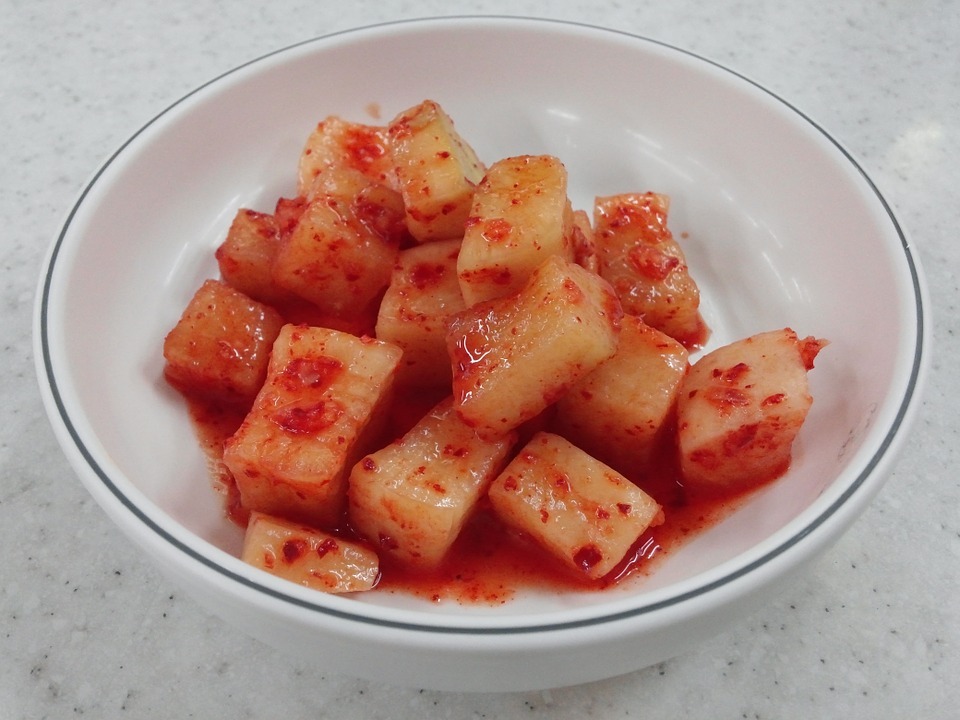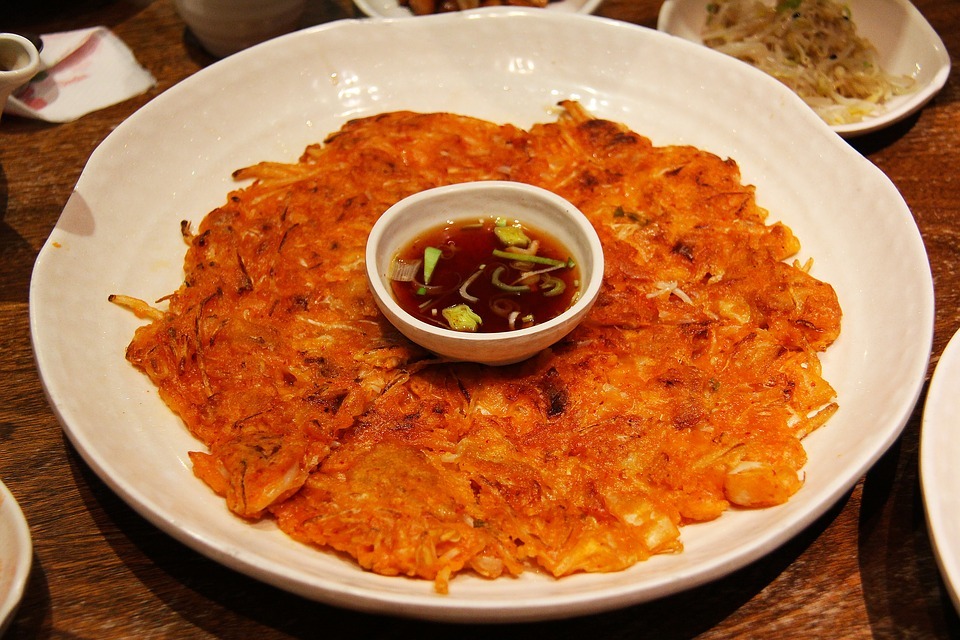A staple of Korean cuisine, the fermented vegetable dish known as Kimchi is present in almost all Korean households. Kimchi mainly serves as a side dish to other dishes such as samgyeopsal and galbi.
But would you believe that Kimchi was not originally spicy? Let’s take a look at the history of kimchi and find out what made this dish so popular not only in Korea, but also anywhere in the world.
History of Kimchi
To understand how kimchi came to be, we must first explore the origins of fermentation in Korea. It is said that fermented foods were already available as early as 57 BC, according to the records from the Three Kingdoms period.
The Three Kingdoms era is a time where three large states, namely Baekje, Silla, and Goguryeo, were governing the land. The state Goguryeo later became Goryeo, the name where the word Korea was derived.
The people during this period were known to be able to produce fermented products such as wine and soybean paste.
Agriculture during this era was very problematic, with vegetables not able to withstand the harsh and cold climate in the land. Due to this, people were starting to explore new ways to eat vegetables, even in the coldest of winters. They discovered that they can ferment vegetables to further increase its shelf life and the time for it to still be edible.
The people started fermenting Korean radishes using salt, which resulted in the birth of the original kimchi.
After the unification of the kingdoms and the rise of the Goryeo Dynasty, Korea became involved in trading with other kingdoms, mainly the Chinese. Because of this, Koreans have found new ingredients such as garlic and Chinese cabbage and incorporated them into their kimchi recipe.
Chinese cabbages became an essential ingredient to kimchi during this period. Once only grown in the Yangtze region, the Chinese used this type of cabbage as one of the export items that they can trade to their neighboring countries. Now, Chinese cabbage is commonly found in grocery stores worldwide, and in 2017, the International Space Station discovered a way to harvest Chinese cabbages inside their satellite.
A popular kimchi ingredient, the chili pepper, was then added to kimchi during the Joseon Dynasty. It is interesting to note that chili peppers also came to Korea because of trading, similar to the Chinese cabbage.
Chili peppers were first used as an ingredient in food at around 3500 BC in Mexico. Christopher Columbus then came to Mexico in 1493. Mistaking the continent of America as India, he first thought that the chili pepper is the infamous black pepper only found in India. Believing that he already got the black pepper, he came back to Spain while carrying chili peppers as cargo on his ship.
After becoming a popular spice in Spain, it became an export item in their trades. The chili pepper eventually landed in Korea, and the people loved it as much as any other in the world.
The ingredients in kimchi are not entirely Korean, which makes it a very diverse dish that surprisingly also tickles the taste buds of people from other countries.
Types of Kimchi
Due to the kimchi’s rich history, Koreans have developed several ways to prepare it. Here are some of the popular types of kimchi that is a must-try.
Baechu-kimchi
The most popular kimchi in the list, the Baechu-kimchi consists of salt, Napa cabbages, garlic, onion, green onions, ginger, and red pepper flakes.
This kimchi is commonly sealed and stored in a glass jar for better storage.
Dongchimi
Dongchimi is a non-spicy water kimchi that looks like a soup at first glance. This kimchi contains Korean radishes, napa cabbages, ginger, and scallions. All of these ingredients are fermented using brine made from salt, onion, garlic, and ginger.
Baechu-geotjeori
There is an unfermented type of kimchi called the geotjeori. This type of kimchi is not made to last long in the shelves and should be eaten immediately after preparing it.
It has the same ingredients as the Baechu-kimchi and also serves as a side dish to rice and other dishes.
Baek-kimchi
More popularly known as the white kimchi, the beak-kimchi doesn’t contain any chili pepper.
Beak-kimchi has napa cabbages, salt, Korean pears, chestnuts, spring onions, garlic, and garlic as its ingredients.
This type of kimchi is perfect for those who want to enjoy the flavors of kimchi without the spicy taste of the chili peppers.
Nabak-kimchi
The Nabak-kimchi is similar to the Dongchimi when it comes to its soupy appearance and preparation; the only difference is that this kimchi contains chili peppers.
While the Dongchimi is usually served during winter, the Nabak-kimchi is eaten during the spring or summer seasons in Korea.
Bossam-kimchi
A much more luxurious kimchi variant, the Bossam-kimchi (wrapped kimchi) contains salted napa cabbages, long arm octopuses, oysters, chestnuts, green onions, ginger, apples, Korean pears, and garlic. After cooking and preparing these ingredients, they are wrapped inside a bowl using leaves of napa cabbages.
Because a lot of ingredients are needed to make this type of kimchi, it is only served during special occasions.
Kkakdugi
Also known as diced radish kimchi, this type of kimchi replaces the napa cabbage on the Baechu-kimchi with a Korean radish chopped into cubes.
Kkakdugi is known to be crispier than the regular cabbage kimchi.
Yeolmu-kimchi
Often eaten during the summer season, the Yeolmu-kimchi is prepared using a yeolmu radish (young summer radish).
Those who prepare this dish as kimchi commonly discard its withered leaves and taproots, leaving only its fresh green leaves as the ingredient.
Pa-kimchi
A popular kimchi dish in Jeolla-do, located in the southern part of South Kora, the Pa-kimchi uses jjokpa, a variety of green onion, as its main ingredient. Along with the jjokpa, the Pa-kimchi also contains red chili pepper flakes, garlic, ginger, scallions, and anchovies.
Pa-kimchi is known to be the easiest type of kimchi to make.
Kimchi Buchimgae
Kimchi Buchimgae, also known as kimchi pancakes, is a type of kimchi that uses the usual ingredients found in Baechu-kimchi but with added flour and eggs to make that pancake-like appearance.
The Kimchi Buchimgae is cooked like a regular pancake, but with kimchi added to the batter.
There are plenty more types of kimchi to discover, and with over 100 varieties to choose from, it would take almost a lifetime for one person to try all kinds of kimchi in the world.



